
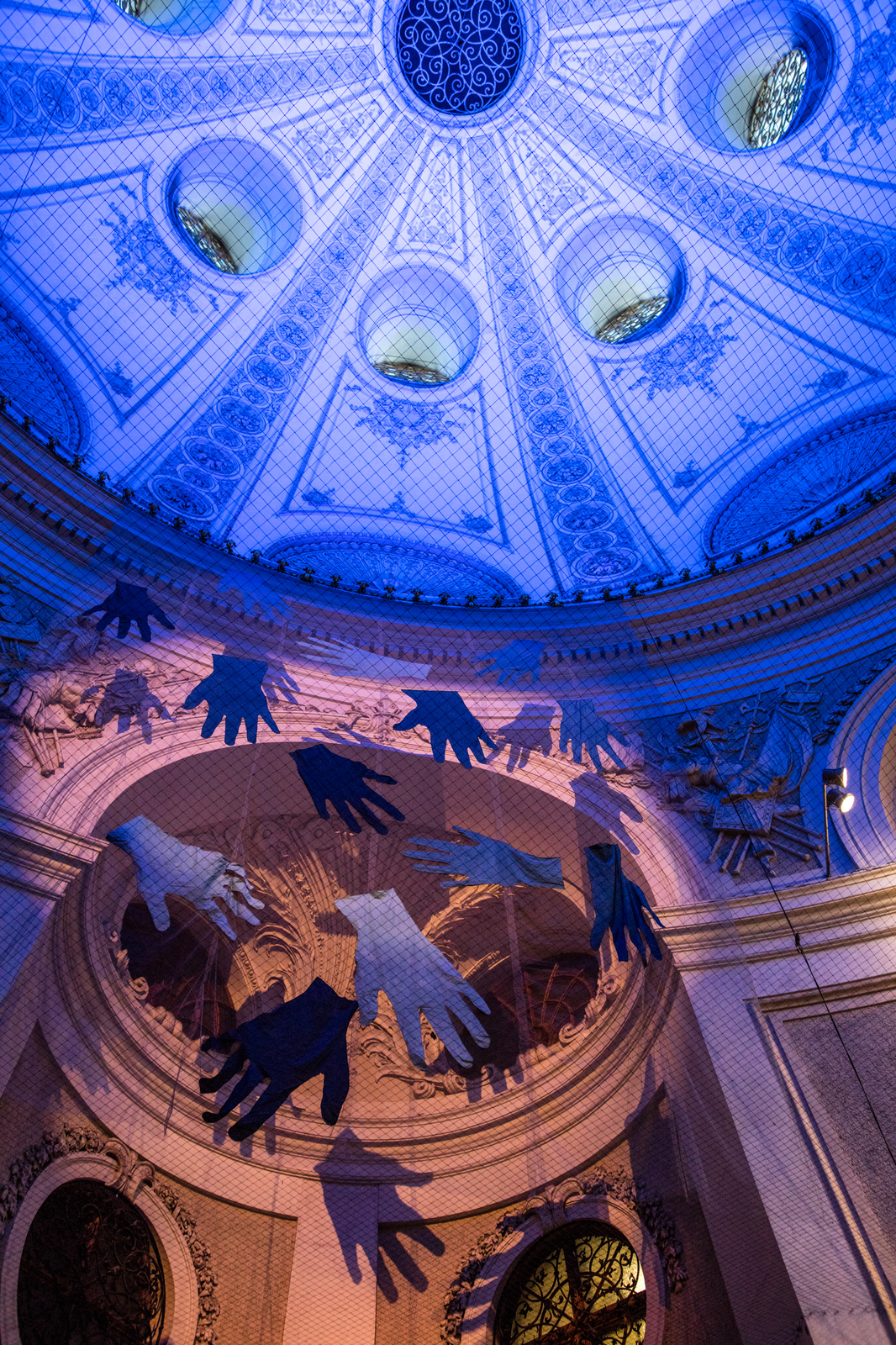
im.material
After the European hand blueprint was submitted to UNESCO in 2016 for inclusion in the International Representative List of the Intangible Cultural Heritage of Humanity, the aim was to contribute to an increased visibility of this transnational cultural heritage with various events in the course of the European Year of Cultural Heritage 2018.
In the course of the project i m . m a t e r i a l , the famous rotunda of the Michaelerkuppel became the largest indigo dyeing kitchen in the world. The artistic exploration of the natural dye indigo and the traditional craft of blue printing caused the dome of St. Michael's Gate to glow in shades of indigo blue, while artistic works by Linda Brassington (GB), James Muriuki (KE) and Lisa Niedermayr (AT) were presented in the niches of the gate.
As an accompanying program to the temporary project i m . m a t e r i a l , the Weltmuseum Wien offered an "INDIGO-Tour" to the most beautiful indigo exhibits in the museum. The tour led to selected indigo textiles of the cultures presented in the current exhibition and provided insights into the diverse textile techniques and cultural traditions of dyeing with the natural dye.
i m . m a t e r i a l is a project of the Austrian Commission for UNESCO in cooperation with the Burghauptmannschaft Österreich. The project was curated by Lisa Niedermayr and Gabriele Detschmann, and was carried out in close cooperation with the Austrian blue print shops Koó from Burgenland and Wagner from Upper Austria, as well as with the Agricultural Vocational and Technical School Andorf.
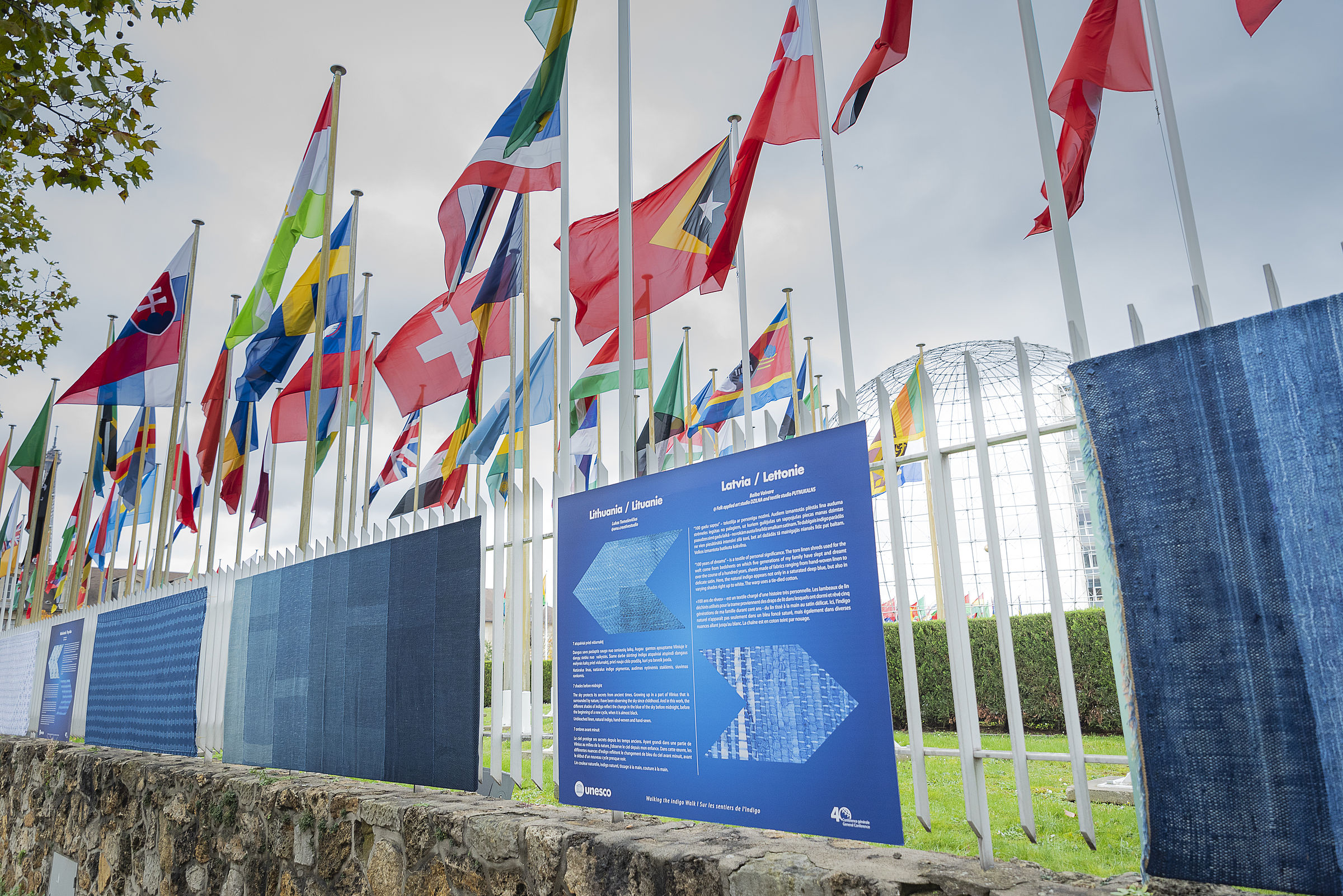
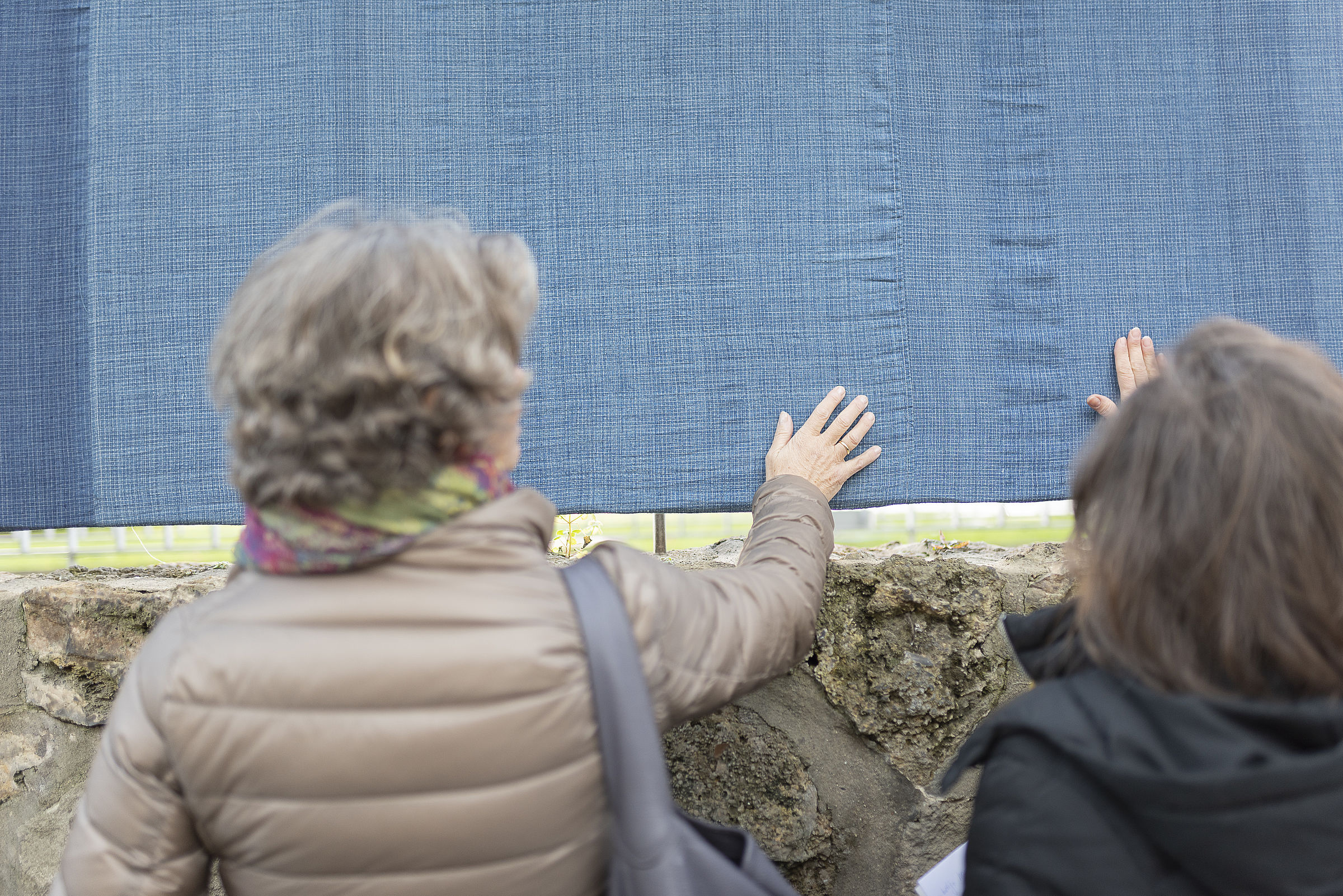
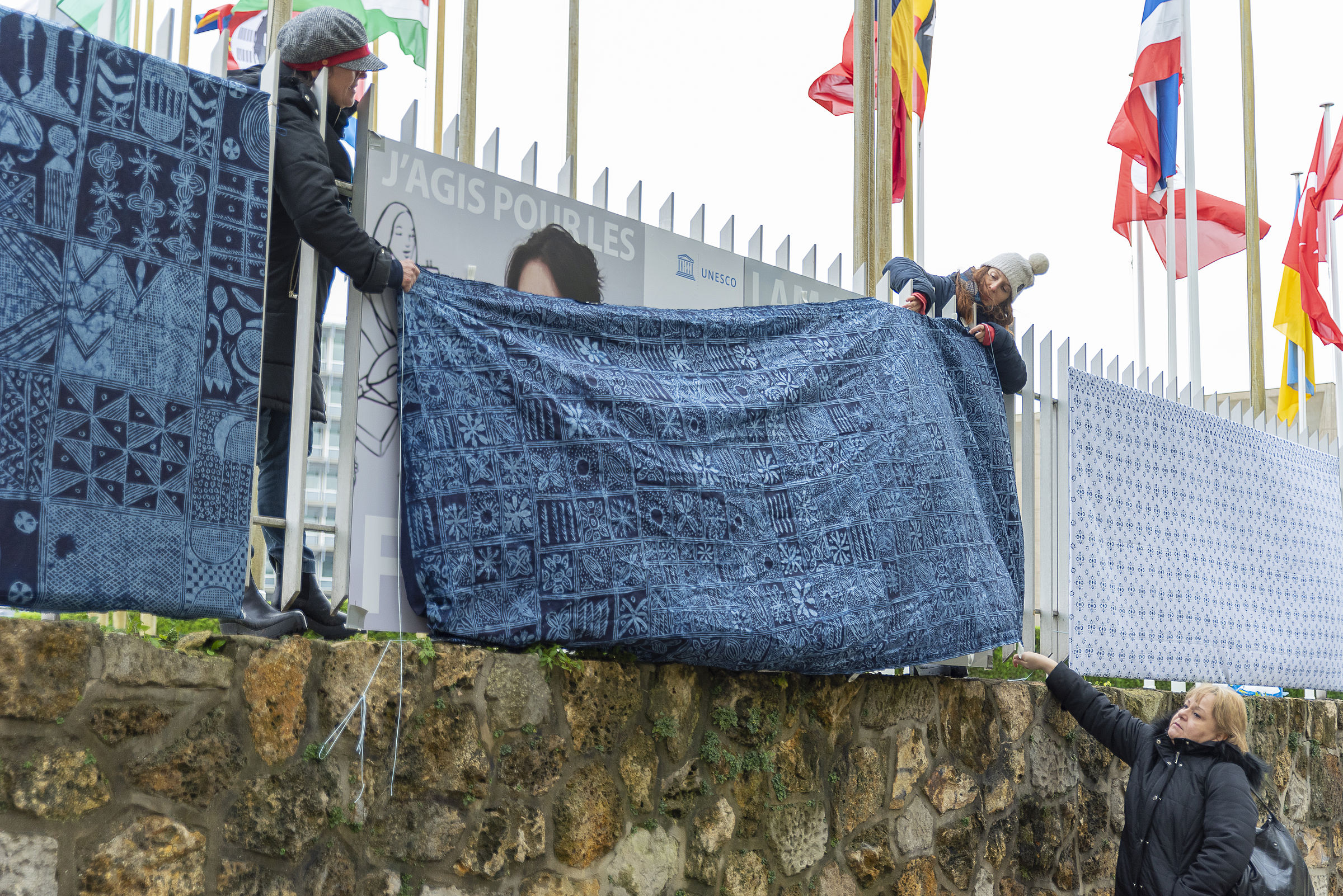
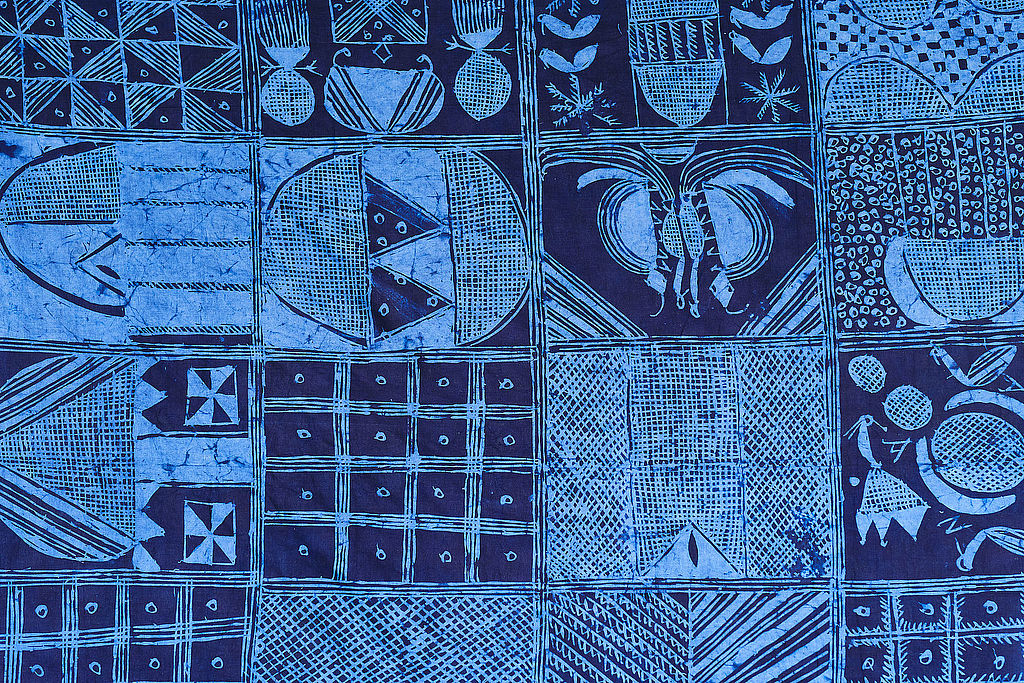
walking the indigo walk
In honor of the inclusion in the Representative List of the Intangible Cultural Heritage of Humanity of the element "blue print", during the 40th UNESCO General Conference in Paris from November 18-21, 2019, textiles dyed with indigo from around the world were presented on the fence in front of the UNESCO building. "Walking the indigo walk" is the title of this exhibition, which showed a total of 34 indigo textile designs from 18 UNESCO Member States. This project was initiated by the Austrian Commission for UNESCO.
Textiles from the following countries were presented:
Austria, Bangladesh, Colombia, Czech Republic, Estonia, Georgia, Germany, Hungary, India, Jordan, Kazakhstan, Latvia, Lithuania, Netherlands, Nigeria, Romania, Russia and Slovakia.
Textile artisans, artists and designers from all over the world submitted more than thirty indigo designs. From cotton to silk and wool to felt materials, from batik to block printing techniques with motifs and patterns, each design told its own story. In its entirety, this exhibition embodied an invitation to a journey... into the blue.
This project was initiated by the Austrian Commission for UNESCO, supported by the UNESCO National Commissions from Germany, Slovakia, the Czech Republic and Hungary. The exhibition was curated by Gabriele Detschmann and Lisa Niedermayr.
Cooperation with students of the LFS Andorf
From September 19 to 20, 2019, the students of the LFS Andorf with the training focus ECO-Design were able to actively participate in the preparations of the indigotextile designs for the assembly and thus gain insights into the working methods for the implementation of artistic design concepts and production processes. Two days were spent working together: In the school's sewing workshop, all indigo fabrics were made up to the prescribed necessary size and the fabric edges were secured and reinforced with a safety tape for later tensioning onto the exhibition display.
Output
Both art installations in public space put the European traditions of indigo dyeing into a global and local context. Passers-by were able to engage with the significance of hand blueprinting on a national and international level as they walked by. The exhibitions highlighted the rich diversity of intangible cultural heritage as well as the socio-cultural and economic role of the craft.

![[Translate to EN:] © J. Ségur/ZED, with the permission of UNESCO](/fileadmin/_processed_/d/b/csm_Convention-2003-IKE_0832a6a47d.jpg)
![[Translate to EN:] © ÖUK](/fileadmin/_processed_/3/9/csm_P1011318_7eac86402f.jpg)

![[Translate to EN:] © Weitblickfilm](/fileadmin/_processed_/9/8/csm_Workshop_17_2dee1e1fd8.jpg)